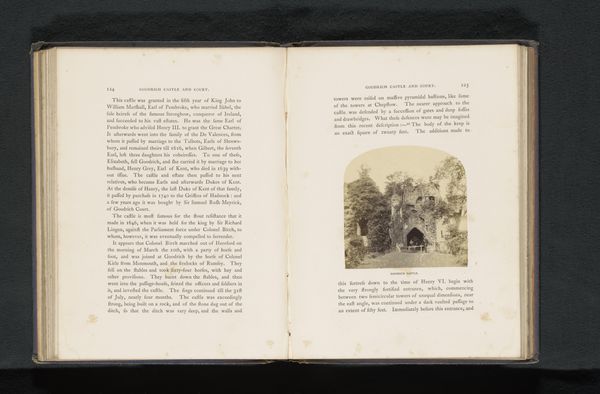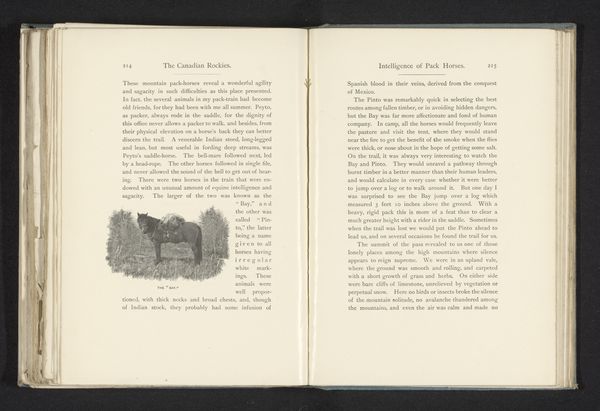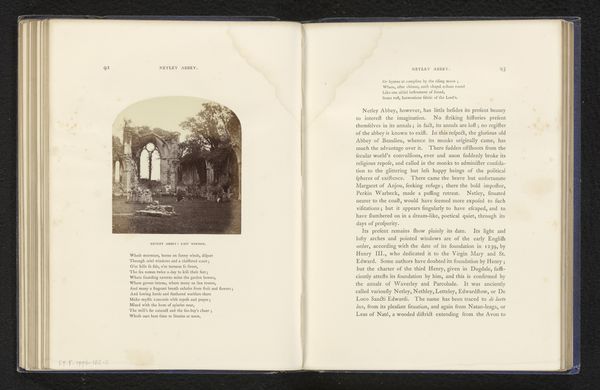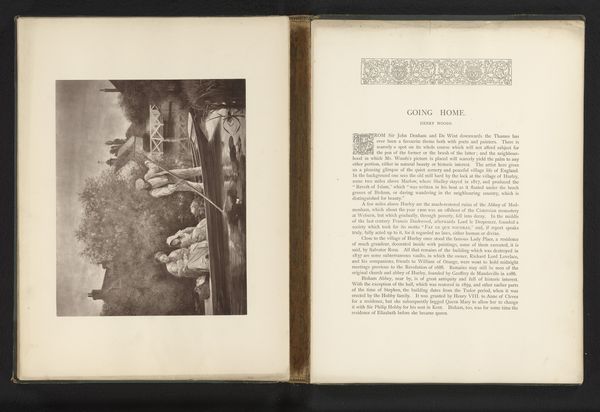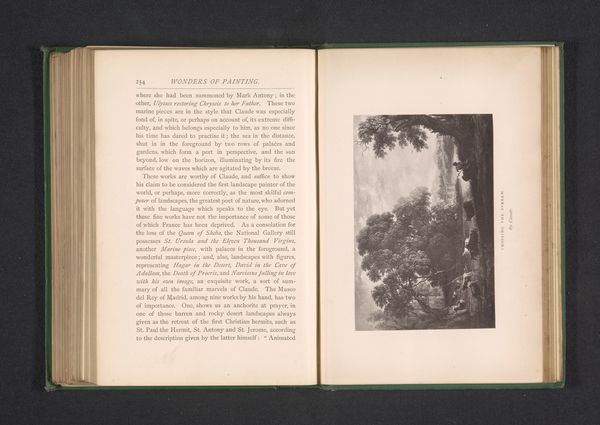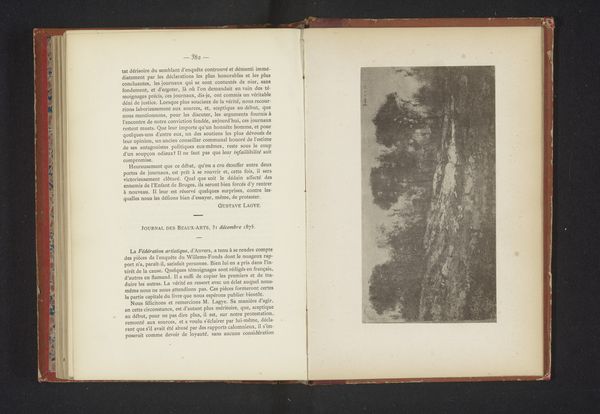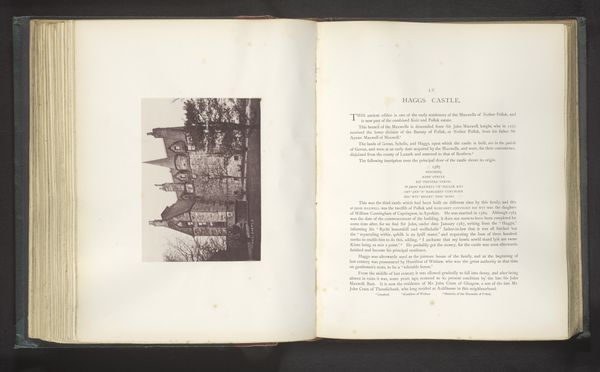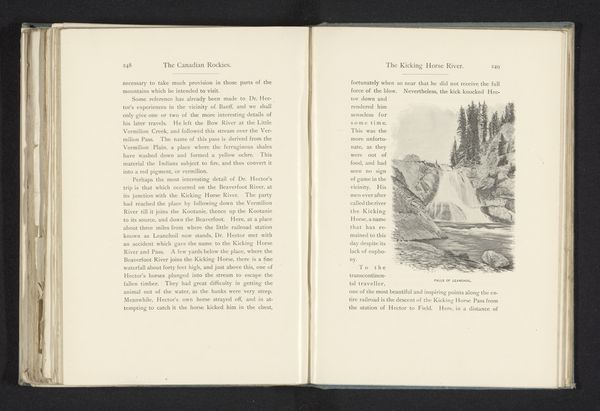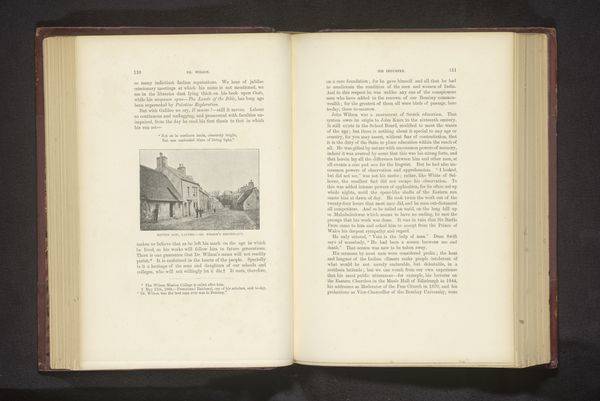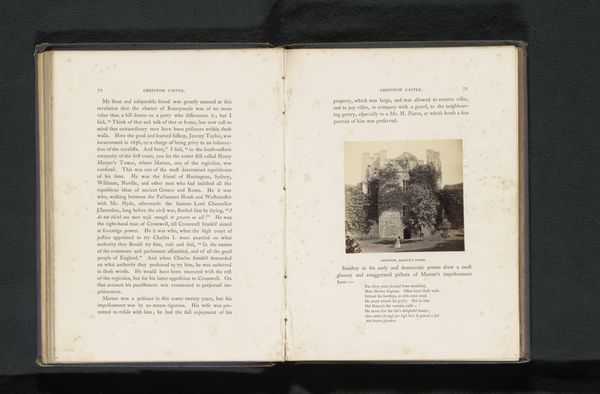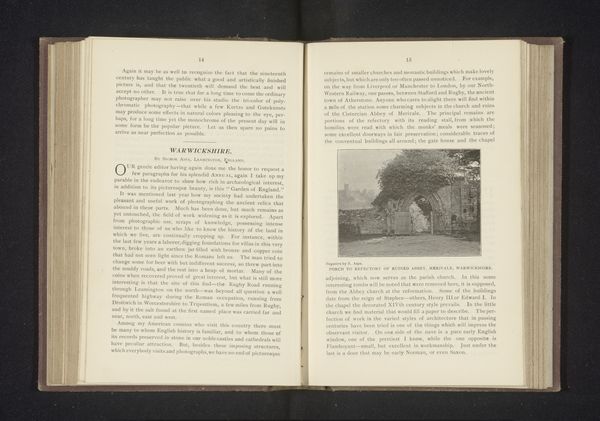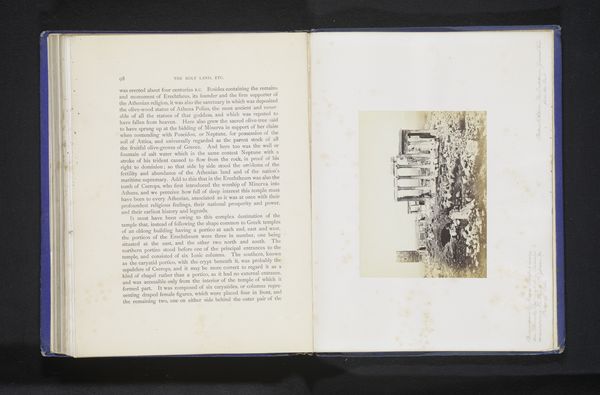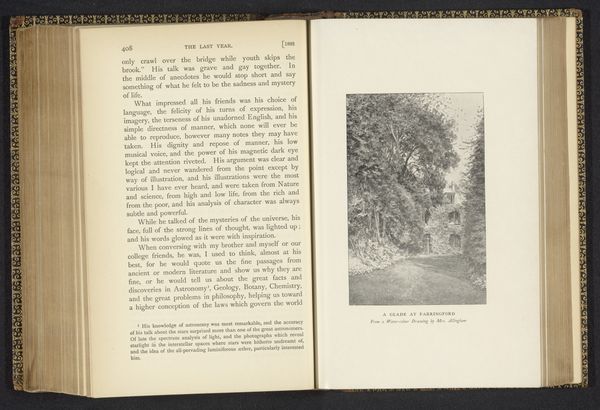
print, photography, collotype, woodblock-print
#
medieval
# print
#
landscape
#
house
#
photography
#
collotype
#
woodblock-print
#
history-painting
Dimensions: height 76 mm, width 79 mm
Copyright: Rijks Museum: Open Domain
Curator: Here we have a photographic print titled "Gezicht op de poort van Raglan Castle," dating to before 1862, by Francis Bedford. The image captures a view of the castle gate. Editor: My immediate feeling? It’s melancholic. That creamy, aged tone whispers of faded grandeur. The overgrown foliage draped on the stone softens what could have been austere. Curator: Yes, there’s a real dialogue between nature and human structure here. Bedford, though operating within a commercial market, was deeply invested in documenting British architectural heritage through photography. We must acknowledge this is reproduced using a collotype process based on a woodblock-print too. The materiality really enhances the tone. Editor: Absolutely, and knowing that the process itself combines the modern with what would have been traditionally artistic processes deepens the mood too. The details visible are incredibly impressive – the texture of the stone, the ivy, even those tiny figures standing in the gateway, the tiny glimpse into past lives! It evokes a very particular, gentle kind of historical narrative. It's far removed from the imposing history-painting style this image seems to imitate Curator: Indeed. What’s crucial here is how Bedford negotiates the evolving technologies and their relation to visual culture in 19th century Britain. His choice of the collotype to reproduce images that, for many, would've only been known through engravings marks a real shift in consumption. Photography allowed for wider circulation and arguably democratized access. Editor: But it is such an edited form. It would be so easy to view that gate romantically, ignoring the very violent history there must have been around that location. And, in reproducing it into something mass producable, how do you retain integrity to the past? What’s that process like? Curator: Well, to consider those class tensions of wider availability is exactly how to approach this kind of image. Bedford clearly played with the public's taste for the picturesque while operating firmly within established industrial modes. The print, therefore, becomes an artifact embedded in consumption as well as representation. Editor: It does offer, perhaps unintentionally, a glimpse into Victorian nostalgia as an industry. All the sentiment, skillfully manufactured. Looking again, though, the actual scene *is* genuinely evocative… a space both touched and untouched by time. Curator: Precisely, that tension is what makes the piece so engaging. Editor: It seems we agree then – a melancholic image created via an industrial and ever evolving materialist means. Intriguing!
Comments
No comments
Be the first to comment and join the conversation on the ultimate creative platform.
